Which is better, Panama Jade Geisha Coffee or Colombian Hope Manor Rose Summer Coffee?
Jade Manor:
The geisha of La Esmeralda became world-famous coffee by accident. Retired Swedish banker Rudolph A. Peterson bought the Jade Manor in Panama to spend his twilight years. Unexpectedly, the coffee trees in the manor bore fruit and sent them to participate in the coffee competition. As a result, they became famous in World War I. Won the national championship of the Panamanian boutique coffee competition in 2004.
This coffee variety, which did not appear in the coffee competition, began to attract attention, but most people only held a wait-and-see attitude, and some even thought it was a fluke. They did not expect to win the championship again the next year, which should not be underestimated, but because of their low production, people turned to other countries to buy geisha coffee beans, and then the Emerald Manor won the championship year after year, becoming a Panamanian national treasure. But it is not enough to win the affirmation of Panama alone. In the SCAA (American Fine Coffee Association) competition in 2005, the jadeite manor geisha beat heroes from all over the world to win the title of number one in the world, and won the world championship again in 2006 and 2007. At this time, the jadeite manor geisha has become a shocking topic in the coffee industry all over the world.
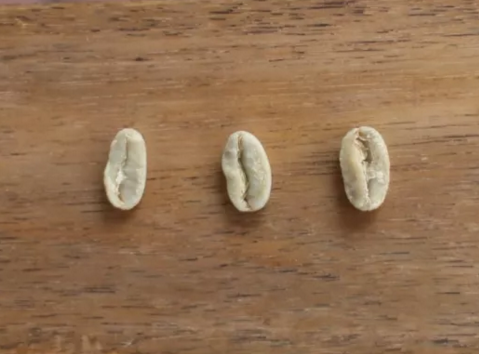
Rose summer (geisha)
It is planted in many parts of the world and is the new king of boutique coffee, among which Latin American countries such as Panama, Guatemala and Colombia have higher quality and higher prices.
Panama's geographical conditions from east to west allow cold air to flow through the Central Mountains at more than 6500 feet, thus forming a variety of unique microclimates in places such as Boquete, Volc á n, Candela and Santa Clara, coupled with nutritious and balanced volcanic ash soil, these areas have also become Panamanian coffee and famous producers of the world's top boutique coffee.
The unique orange flavor of a Panamanian geisha is so moving that it has "the orange fragrance gene kissed by God". It must have benefited from the good mountains and water of Panama. The low temperature and stable climate at high altitude makes the coffee here grow slowly and the beans are hard. All have a unique and strong flavor. Although geisha is good, its output is really limited. The annual production of geisha in Jade Manor is less than 12 tons, and the top grade is no more than 200 to 300 kilograms, so it is difficult to meet the taste buds of coffee lovers all over the world. as a result, major well-known producing areas around the world have stepped up the trial of geisha, trying to show different landforms and different flavors of geisha, which is very good. Coffee worms have a good taste.
Haines, a Swede, in 1924. Elliott founded the Emerald Manor, which was not a coffee grower but a ranch. Forty years later, Daniel Lou in 1964. Mr. Bidarson's grandfather, Luther Ruffer. Mr. Bidarson bought the Emerald Manor in order to have an old home after retirement, grandfather Luthor. Mr. Bidasson was born in Sweden and served as president of the Bank of America and director of United Nations Development. His son Blaise. Mr. Bidasson moved to Panama from California in 1973 and inherited his father's estate. In 1987, he converted most of the estate to growing coffee. In 1994, he invested in the machinery and equipment of refined coffee to start the brand. Mr. Bidasson and his wife Susan raised three children, Elligo (born in Philadelphia in 1966) and Danielu (born in Panama in 1974).
In 1996, Blaise and Rachel visited a manor for sale in the Haramijun area of the Bocketti Valley, and were attracted by its beauty and bought it immediately. This is the Emerald Manor, the third son Daniel Lu. This is where Mr. Bidasson grows the geisha coffee that attracts the attention of the coffee world.
Mainly because she set an unshakable championship record. The price of winning beans must have soared, and the champion price is as high as dozens of times the market value, but the award record of Jade Manor is unprecedented, winning a total of 15 different coffee competitions as of 2013. in particular, the summer batch of sun roses, which won the best Panamanian tanning group in 2013, was marked at $350.25 per pound! At that time, the price of non-competitive grade boutique coffee beans in Panama in 2013 was about $6 a pound, which was 58 times higher than that of other boutiques.
What are the characteristics of geisha coffee?
Rosa coffee raw beans have a very beautiful blue-green, jade-like warm texture, smell fresh grass, peach, berry flavor and oolong tea unique milk sweetness that most coffee beans do not have. it seems that aroma and taste of this kind of things need to be associated, but a hint of tea smell is obvious to us.
In order to highlight the characteristics and aroma of this bean, the baking degree is on the verge of two explosions, and two explosions and one sound are more commonly used baking degrees, which can give play to the characteristics of the beans themselves. If they are too shallow, they will produce miscellaneous smells, and if they are too deep, they will lose the aroma of flowers and fruit acid. of course, this should be adjusted according to the characteristics of coffee beans and the roaster's understanding of the beans themselves.
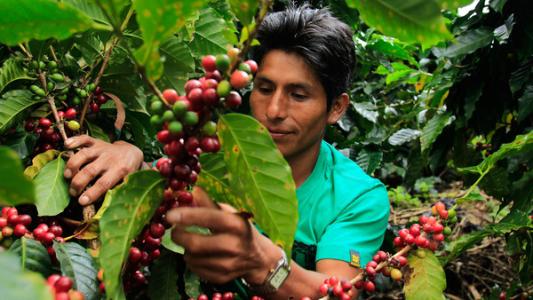
Flavor:
Flowers, tropical fruits, strong sweetness; properly baked, they make you feel like sipping the fragrance of a bouquet of flowers. It was originally an ancient native species from Ethiopia, as a coffee sample was brought to the coffee experimental garden in Costa Rica, and was distributed to several small farms for small-scale trial.
Not many people followed Rose Summer until one day, Esmerada (Emerald) Manor in Panama separated it from other varieties and won the national coffee competition.
The fruity and floral elements are almost like Yega Xuefei from Africa and Ethiopia on the other side of the world. Of course, now some small farms also get rose summer seeds, and are eager to grow their own rose summer.
However, the results are different, and this "star" variety seems to have different tastes in different geographical locations due to the influence of weather, soil and altitude. However, in the Aktenango region, we see typical rosy summer features: the slender shape of beans, the changes during baking, and the elegant and uncooked flavor in the cup.
According to the elevation, the rose summer of the jadeite manor is divided into:
Bidding for ESMERALDA SPECIAL (red bid), selected above 1550 meters above sea level.
Poquet Boquete Geisha (green mark), Rose Summer is a selection of 1500 meters.
(ESMERALDA 1500) (Blue Standard) selected varieties of Rosa rugosa at an altitude of about 1500.
Red bid Rose Xia participates in the global bidding auction in May every year. Green bid does not participate in the auction, but it is also of high quality and the price is slightly cheaper. Buyers who buy red bid can give priority to buying green bid.
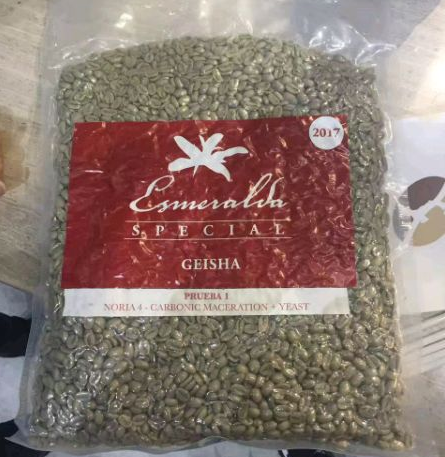
Four brands of Jade Manor:
One. The independent bidding held by the Jadeite Manor is entirely based on the name of the production block, and each block is subdivided into small batches according to the name of the production block. only the Rose Summer lot that the manor takes out for independent bidding can use the selected name of Jadeite.
Two. [rose summer-Bokuidi] rose summer seed, but not an independent competition batch, by the production areas do not participate in bidding but still excellent quality of the batch mixed into the brand, but is still a rose summer variety.
Three. Diamond Hill is a traditional variety of emeralds, and it is planted in Canaus-Vedweiss and Horamie regions, about 1400 meters. The taste of coffee is complex, chocolate, vanilla and sweet mandarin are obvious, and the cultivated varieties are standard Sino-American mixtures, including Tippika, Bourbon and Katay.
Four. [Pamela] is on the outskirts of Bokui town, about 1000 meters above sea level. It is the only place where it is planted at a low altitude, and it is almost all katai. Although it is not of high quality, it is not too sour, and its sweet nutty and chocolate flavor is obvious.
Characteristics of Geisha Coffee in Rosa, Colombia
The Herrera family of Hope Farm in Colombia introduced Gesha coffee from the Emerald Manor of Panama in 2007. Although it failed at first, after years of hard work, it won the first prize in the COTY-Coffees of the Year held by the American Fine Coffee Association in Houston in April 2011. for details, see the American Fine Coffee Association 2011 Global Best Coffee Competition.
After winning the SCAA championship in 2011, he was selected into the top 10 again in 2012, which can be described as strong. Blue Mountain Geisha, from 1700m to 1950m above sea level in the Cauca Valley of Colombia, has aromas of Darjeeling black tea, orange, yellow sweet lemon, sweetness of black sugar and citrus juice, and a finish of sweet-scented osmanthus and rum. Mild and non-irritating acidity, excellent thick texture, high-grade black tea texture. As the temperature drops, the sour taste softens. The soft sour taste brings obvious sweetness.
Columbia Triple Crown Manor Hope Manor (Caf é Granja La Esperanza), the best-known Blue Hills Manor washes to treat geisha / Rose Summer.
Hope Manor has four estates (Esperanza, Las Margaritas, Cerro Azul and Potosi). Won the Best of Panama (BOP) Best Panama Champion (2008) and runner-up (2009), and won the unexpected 2nd, 3rd and 7th seats in the top 10 of SCAA Coffee of the Year with three products in 2012. In GFA (Good Food Award), which has just been announced, Hope Manor has also become the only award-winning estate outside Ethiopia, Kenya and Panama.
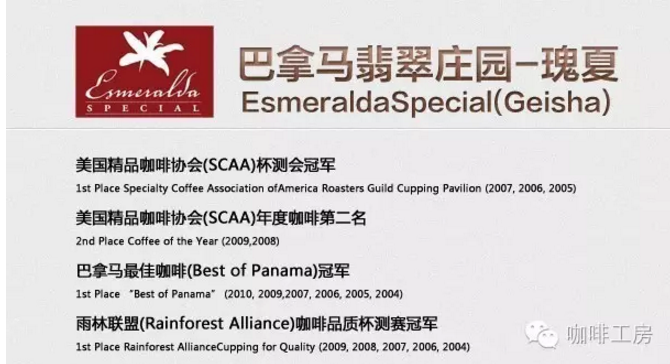
[different utensils and different cooking methods]
The taste will be different.
[hand] flavor:
Changeable levels, clean, balanced, lasting caramel sweetness
1. Choice of appliances: Hario V60
two。 Temperature of water: 91-92 degrees
3. Thickness of powder: small Fuji grinding degree 3.5
4. Depth of baking degree: shallow baking
5. Steaming time: 35 seconds
Specific techniques: [three times cut off water] hand flush rose summer, 15g powder, small Fuji ghost tooth cutter 3.5grind, v60 filter cup, 91-92 degrees water temperature, first water injection 30g water, carry out 35 s steaming, water injection to 104g water cut off, wait for powder bed water to half of water and then water injection, slow water injection until 220g water, 5 grams at the end, water powder ratio 1:15, extraction time about 2:00
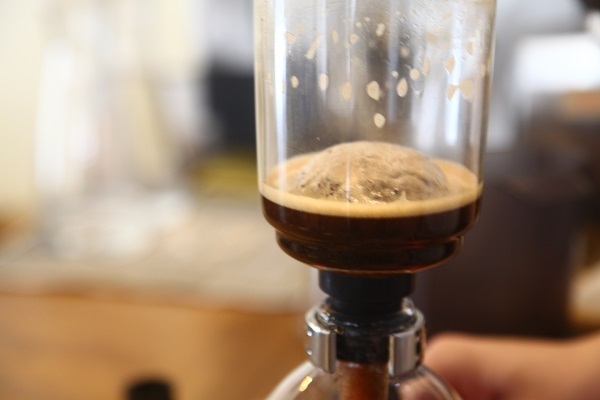
[siphon] flavor:
Round, full-bodied, with outstanding flower and fruit aromas, accompanied by fruit sweetness.
1. Selection of utensils: Hario siphon pot
two。 The temperature of the water: 90 degrees
3. Thickness of powder: small Fuji grinding degree 3
4. Depth of baking degree: medium and shallow baking
5. Length of steaming time: 50 seconds
Specific techniques: side-fired extraction, it is recommended that 20 grams of powder for 2 parts, gouache ratio at 1:12, water scale 2, add powder after use, drop powder after blistering, stir 4-5 times, extract for about 50 seconds, heat up, finally, stir 2 times, wait for the coffee liquid to fall freely.
[cake cup]
Weigh 15g coffee powder, pour it into a grinder and grind it moderately. The finished particles are slightly thicker than salt. We use small Fuji ghost teeth, scale 4, and water temperature 91 degrees.
The hot water in the hand flushing pot draws a circle clockwise with the center of the filter cup. Start the time when brewing, brew the coffee to 30g in 15 seconds, then stop the water injection, and when the time is up to 1 minute, the second water injection. The second water injection is the same as before, draw a circle clockwise with the center of the filter cup, and the water flow should not rush to the place where the coffee powder is connected with the filter paper, so as not to produce channel effect.
Coffee powder to the outermost circle to set aside a circle, and then another circle to the middle, 2 minutes 20 seconds, to the coffee to 220g, brewing coffee is finished.
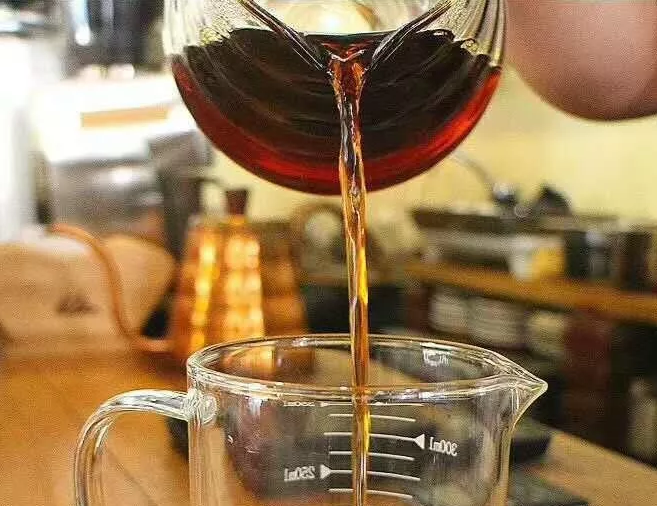
Important Notice :
前街咖啡 FrontStreet Coffee has moved to new addredd:
FrontStreet Coffee Address: 315,Donghua East Road,GuangZhou
Tel:020 38364473
- Prev
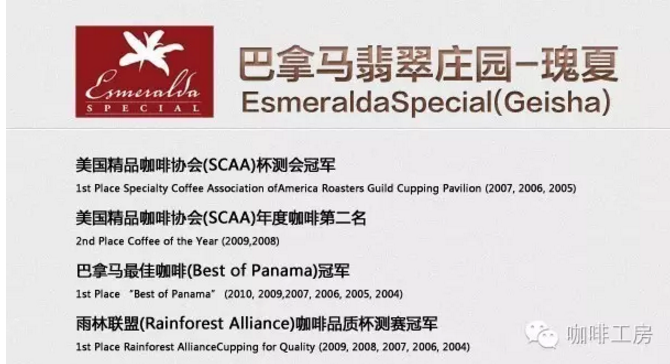
The Jade Manor has an amazing auction record. What are the characteristics of the geisha coffee in the Jade Manor?
Amazing auction record of the Emerald Manor: the geisha of La Esmeralda became a world-famous coffee by accident. Retired Swedish banker Rudolph A. Peterson bought the Jade Manor in Panama to spend his twilight years. Unexpectedly, the coffee trees in the manor bore fruit and delivered it easily.
- Next

Colombia, Panama geisha introduction, how to hand flush? Practical parameters of hand punching, how much is the ratio of water to powder?
Emerald Manor: the geisha of La Esmeralda became world-famous coffee by accident. Retired Swedish banker Rudolph A. Peterson bought the Jade Manor in Panama to spend his twilight years. Unexpectedly, the coffee trees in the manor bore fruit and were sent to participate in the coffee competition.
Related
- Detailed explanation of Jadeite planting Land in Panamanian Jadeite Manor introduction to the grading system of Jadeite competitive bidding, Red bid, Green bid and Rose Summer
- Story of Coffee planting in Brenka region of Costa Rica Stonehenge Manor anaerobic heavy honey treatment of flavor mouth
- What's on the barrel of Blue Mountain Coffee beans?
- Can American coffee also pull flowers? How to use hot American style to pull out a good-looking pattern?
- Can you make a cold extract with coffee beans? What is the right proportion for cold-extracted coffee formula?
- Indonesian PWN Gold Mandrine Coffee Origin Features Flavor How to Chong? Mandolin coffee is American.
- A brief introduction to the flavor characteristics of Brazilian yellow bourbon coffee beans
- What is the effect of different water quality on the flavor of cold-extracted coffee? What kind of water is best for brewing coffee?
- Why do you think of Rose Summer whenever you mention Panamanian coffee?
- Introduction to the characteristics of authentic blue mountain coffee bean producing areas? What is the CIB Coffee Authority in Jamaica?

